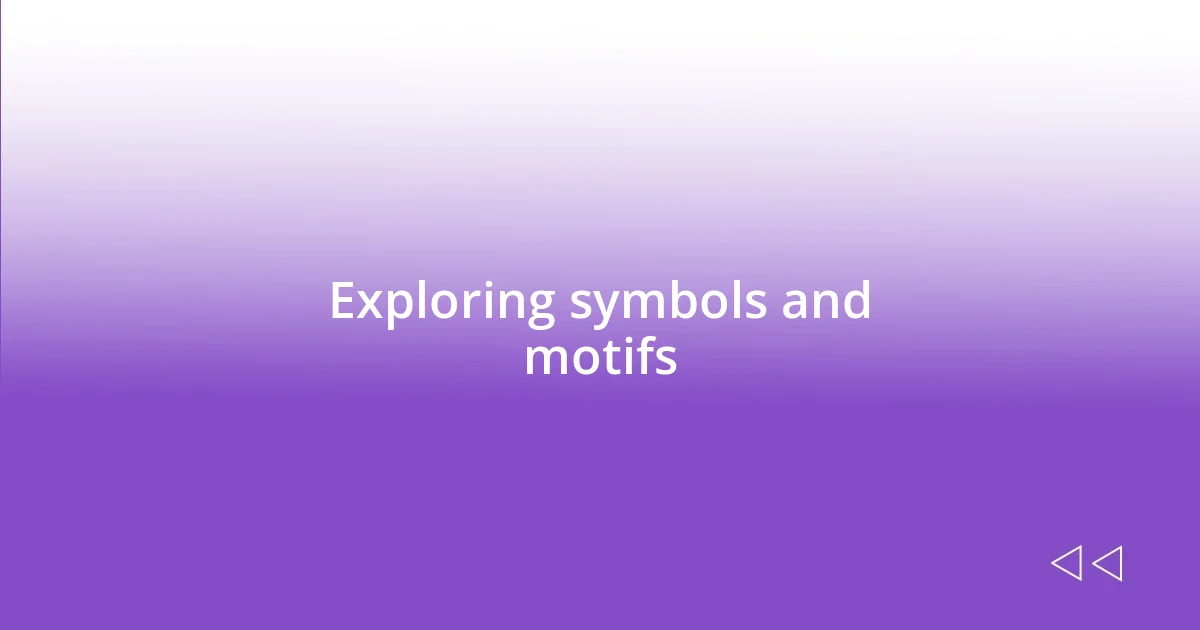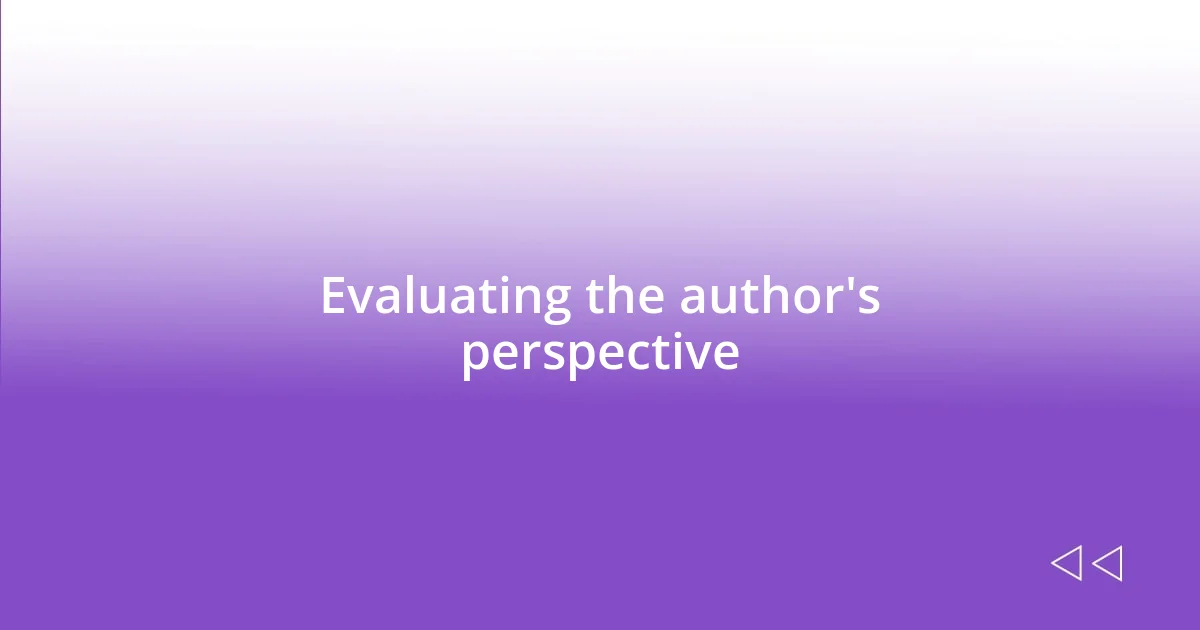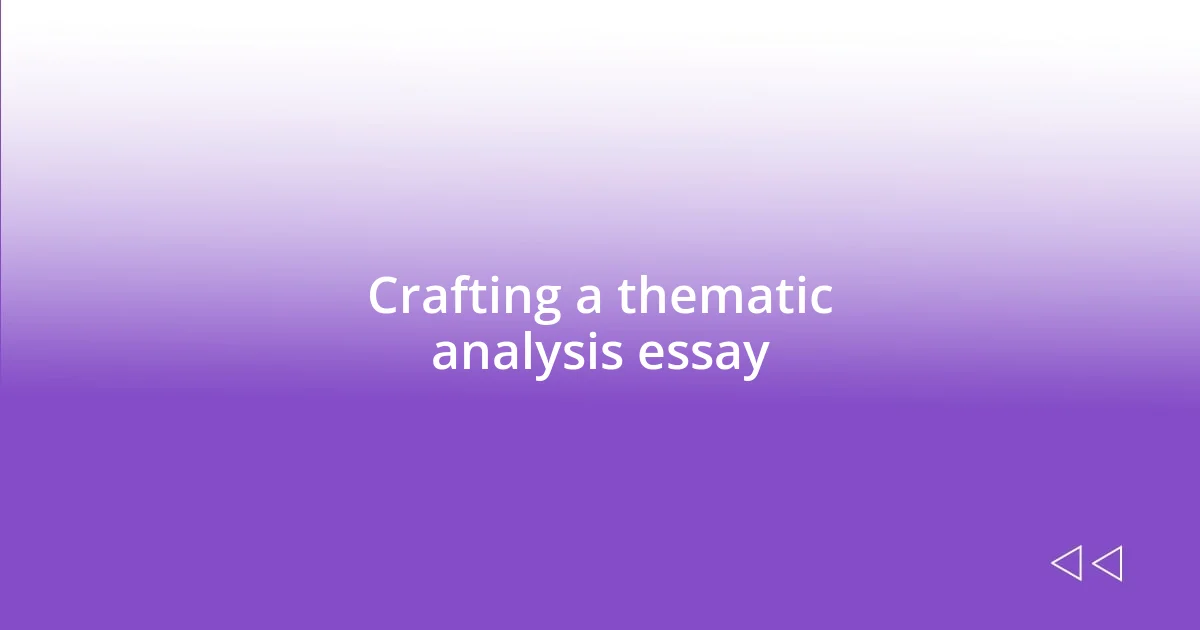Key takeaways:
- Understanding literary themes involves reflection on personal experiences and the universal truths presented in a narrative.
- Identifying key themes relies on analyzing character development, conflict, and symbols within the storyline to uncover deeper meanings.
- Crafting a thematic analysis essay should incorporate personal reflections and explore why themes matter, rather than simply summarizing the plot.

Understanding literary themes
Understanding literary themes requires a thoughtful examination of the underlying messages that authors convey. I often find myself reflecting on how a particular theme resonates with my own life experiences; for instance, the theme of isolation in a novel can spark memories of my own moments of solitude. Isn’t it fascinating how these themes evolve with our personal growth and understanding?
As I delve deeper into a book, I ask myself, “What universal truths is the author trying to communicate?” This question has guided my reading, illuminating themes such as love, sacrifice, and the quest for identity. I remember reading a novel where the protagonist’s struggle with self-acceptance mirrored my own journey, making that theme deeply relatable and poignant.
Themes are not just abstract ideas; they intertwine intimately with emotions and experiences. Each time I encounter a theme, whether it’s about redemption or injustice, I’m reminded of how literature can hold up a mirror to reality. Have you ever felt that connection between the written word and your own life? It’s remarkable how literature offers a space for self-reflection and understanding.

Identifying key themes in novels
Identifying key themes in novels often starts with the foundational context of the storyline and character journeys. For me, this means paying close attention to recurring symbols and phrases that appear throughout the text. During a recent read, a simple image of a bridge kept resurfacing, prompting me to consider what it symbolized—perhaps a connection between two different worlds or a transition in the protagonist’s life. It’s in these small details that themes start to emerge, giving depth to the narrative.
To pinpoint these themes, I often keep a mental checklist of elements to watch for:
– Character development: How do the characters evolve? What challenges shape their actions?
– Conflict: What central struggle drives the plot?
– Setting: How does the environment reflect the themes?
– Dialogue: Are there repeated lines that emphasize particular ideas?
– Author’s tone: What emotions does the tone evoke?
This approach helps me navigate the text more effectively, allowing me to draw out those powerful messages that resonate beyond the pages.

Analyzing characters and their roles
Analyzing characters provides significant insights into their roles within a novel. I often observe how a character’s flaws and strengths contribute to the overarching theme. For example, when I read about a protagonist who struggles with greed, I’m reminded of how their journey reflects the dangers of materialism in our own society. It’s striking how deeply a character’s personal battles can resonate with us, prompting reflections on our values and choices.
In my experience, examining relationships between characters can further illuminate their roles. Take, for instance, a mentor-student dynamic; it often reveals themes of growth and wisdom. I recall a compelling story where a young hero learns more than just survival skills from their mentor—they discover the essence of compassion and sacrifice. This depth adds layers to their individual arcs and collectively enhances the narrative, leading us to contemplate the impact of mentorship in our lives.
Character roles also shift dramatically based on context. I remember dissecting a villain’s backstory that led to unexpected empathy. Their actions, initially seen as pure malevolence, unfold into a complex portrait shaped by trauma and desire for acceptance. I believe this complexity makes literature richer, as it challenges our notions of good and evil, urging us to grasp the multifaceted nature of humanity.
| Character Type | Role in Theme |
|---|---|
| Protagonist | Drives the narrative; often faces internal conflict that reflects prevalent themes. |
| Antagonist | Challenges protagonist, often embodying the thematic opposition or societal issues. |
| Mentor | Guides protagonist, often representing wisdom or moral lessons intertwined with themes of growth. |
| Sidekick | Offers support; can highlight themes of friendship and loyalty through their relationships. |

Exploring symbols and motifs
Exploring symbols and motifs in novels feels like unearthing hidden treasures buried within the narrative. For instance, a recurring motif of the ocean often evokes feelings of freedom and longing for characters. I vividly recall reading a book where waves crashing against the shore mirrored the protagonist’s turbulent emotions. This connection between the symbol and the character’s inner world opens a fascinating dialogue about how we interpret such imagery in literature.
Symbols can also create layers of meaning that invite us to ponder deeper questions. Consider a simple object like a key—what does it unlock? In one novel, a key represented not only physical access to a long-lost family secret but also the emotional door to forgiveness and acceptance. I remember feeling an overwhelming sense of hope when the key was finally used, realizing that sometimes, the things we unlock in ourselves are just as significant as those in the story.
Motifs, on the other hand, serve as the heartbeat of a narrative, pumping life into themes and ideas. I often find myself captivated by motifs of light and darkness in gothic novels, which reflect struggles between ignorance and enlightenment. Why do certain symbols recur so powerfully? My personal belief is that they resonate on a universal level, echoing our own experiences and emotions. When I see darkness enveloping a character, I can’t help but relate it to my moments of uncertainty, creating a palpable connection between the text and my life.

Contextualizing themes within the plot
Context plays a crucial role in how I contextualize themes within a plot. For example, I’ve often encountered novels set against historical backdrops. Each time, I feel the weight of that era’s societal norms and expectations, which can shape the characters’ decisions and conflicts. Think about it: how would the theme of individualism resonate in a story set during the rigid cultural confines of the Victorian era compared to a contemporary setting? The contrast is striking and opens up avenues for meaningful discussion.
I also appreciate how the setting influences the emotional undercurrents of the plot. In one novel I read, the characters’ struggles with love and acceptance were magnified by the oppressive atmosphere of a dystopian community. It felt suffocating, almost as if the walls themselves were whispering reminders of what they could never have. This interplay between the context and the theme deepens my engagement with the story, pushing me to reflect on the broader implications for our lives. It often makes me wonder, how much do our own environments dictate our choices and aspirations?
Furthermore, I find that examining the context also helps me understand the author’s intent. When I dive into a novel written during a time of social upheaval, I notice how the themes can serve as a reflection or critique of the prevailing attitudes of that period. It’s fascinating to see how characters navigate their circumstances, often mirroring real societal issues. This inspires me to consider how literature can act as a powerful lens through which we examine our own world. Are we not all, in some ways, characters in our own plots, shaped by the contexts we inhabit?

Evaluating the author’s perspective
Evaluating the author’s perspective is key to unlocking deeper themes in their work. I often find myself pondering: what beliefs or biases might influence the author’s portrayal of their characters? For instance, I once read a novel where the author’s subtle critiques of societal expectations made me reflect on how my own upbringing shaped my views. It’s like a mirror held up to our lives, prompting us to question what we take for granted.
When I analyze a narrative, I try to discern the author’s voice and intentions. In a recent book, the author portrayed a conflict between tradition and modernity, which resonated with me deeply. I realized that my own experiences with change, whether in relationships or career paths, mirrored the characters’ struggles. This connection made me realize how powerful an author’s perspective can be in evoking emotions—it’s as if they are reaching through the pages to strike a chord within me.
I also think about how an author’s background influences their storytelling. Can you imagine reading a novel about love and loss written by someone who hasn’t experienced it? Knowing the author’s personal history adds layers of meaning. For example, I felt a profound sorrow in a novel where the author, having lost a loved one, infused the story with raw, honest grief. It made me appreciate how such experiences enrich their narrative, compelling us to engage not just with the characters but with the emotions that stem from the author’s own life.

Crafting a thematic analysis essay
Crafting a thematic analysis essay begins with a clear understanding of the central theme you wish to explore. I remember when I first approached this task; I felt overwhelmed by the plethora of ideas swirling in my head. To make sense of it, I created an outline that identified the main theme, the relevant passages, and my interpretations. This organizational step proved essential, as it allowed me to dive deeper into the text without losing focus.
As I composed my essay, I found that weaving in personal reflections made my analysis much more engaging. For instance, while discussing a novel centered on the fragility of human connection, I drew parallels to my own experiences of friendship and loss. I recall writing about a time when a close friend moved away, leaving me to ponder how distance can alter relationships. This personal touch not only enriched my essay but also provided readers with relatable insights. Don’t you think it’s these connections that often resonate most deeply with others?
Lastly, I emphasize the importance of synthesizing ideas rather than merely summarizing the plot. I’ve learned that a strong thematic analysis goes beyond what happens in the story; it explores why it matters. In one essay, I analyzed a motif of sacrifice, connecting it to broader societal themes of duty versus personal desire. It felt rewarding to draw those connections and to share how the story’s impact extended into real-life conversations about selflessness. By inviting readers to think critically about the themes, I found that my essays became not just analyses but meaningful dialogues. Have you found that inviting readers into your thought process can transform a simple essay into something much grander?












